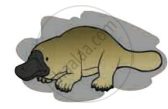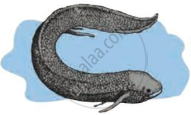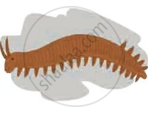Advertisements
Advertisements
Question
Write avian characters of Archaeopteryx.
Solution
- Feathery exoskeleton.
- Forelimbs are modified into wings.
- Jaws are modified into beak.
- Skull bone is completely fused.
- Large rounded cranium.
- Cranium with large orbits and a single condyle.
- Limb bones are bird like.
- Hind limbs with four toes first toe is opposible.
APPEARS IN
RELATED QUESTIONS
What are vestigial organs?
(a) Select the analogous structures from the combination given below:
(i) Forelimbs of whales and bats
(ii) Eyes of octopus and mammals
(iii) Tuber of sweet potato and potato
(iv) Tuber of Bougainvillea and tendrils of Cucurbita
(b) State the kind of evolution they represent
Explain the terms analogous and homologous organs with examples.
Differentiate between analogous and homologous structures.
Select and write analogous structures from the list given below :
1) Wings of butterfly and birds
2) Vertebrate hearts
3) Tendrils of Bougainvillea and Cucurbita
4) Tubers of sweet potato and potato
Vestigial organ ______ present in human body is proof of evolution.
Write the names of those animals in whom the human body organs are functioning.
Write the answers to the questions by observing the figure below.
 |
 |
 |
| (a) | (b) | (c) |
- Write the name of the animal ‘(a)’ in the figure.
- Write the name of the animal ‘(b)’ in the figure.
- Write the name of the animal ‘(c)’ in the figure.
- Which evolutionary evidence is illustrated by this figure?
- Write the definition of that evidence for evolution.
Which is not a vestigial organ in a man?
The bones of forelimbs of whale, bat, cheetah and man are similar in structure, because ______.
